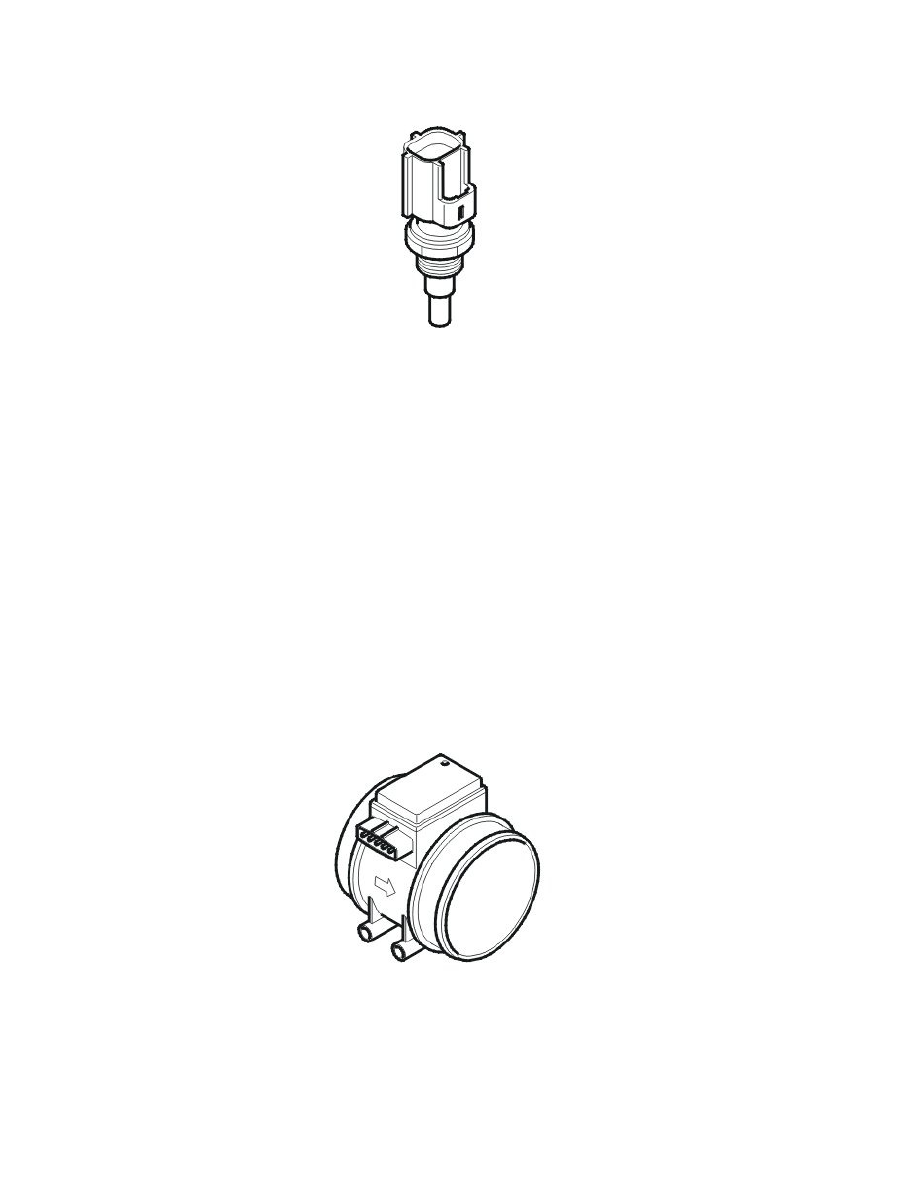XC90 AWD V8-4.4L VIN 85 B8444S (2005)

The engine control module (ECM) can diagnose the knock sensors (KS).
Engine coolant temperature (ECT) sensor
The engine coolant temperature (ECT) sensor checks the temperature of the engine coolant. The temperature of the engine coolant is required so that the
engine control module (ECM) can regulate:
-
the injection period
-
the idle speed
-
the engine cooling fan (FC)
-
the ignition advance
-
engagement and disengagement of the A/C compressor
-
diagnostic functions.
The sensor is a negative temperature coefficient (NTC) type which is supplied with power from the control module (signal) and is grounded in the
control module.
The resistance in the sensor changes depending on the temperature of the coolant. Depending on the resistance in the sensor, voltage (signal) is
transmitted to the engine control module (ECM). The lower the temperature the higher the voltage (high resistance). A high temperature results in low
voltage (low resistance).
The engine coolant temperature (ECT) sensor is located beside the thermostat.
The engine coolant temperature (ECT) can be diagnosed by the engine control module (ECM) and the value of the sensor can be read off.
Alternator control module (ACM)
See Design and Function, Generator (GEN).
Mass air flow (MAF) sensor/Intake air temperature (IAT) sensor
Overview
The mass air flow (MAF) sensor is a combined sensor and contains two sensors in the same component:
-
mass air flow (MAF) sensor
-
intake air temperature (IAT) sensor.
The mass air flow (MAF) sensor is positioned between the air cleaner (ACL) housing and the intake manifold.
Mass air flow (MAF) sensor
